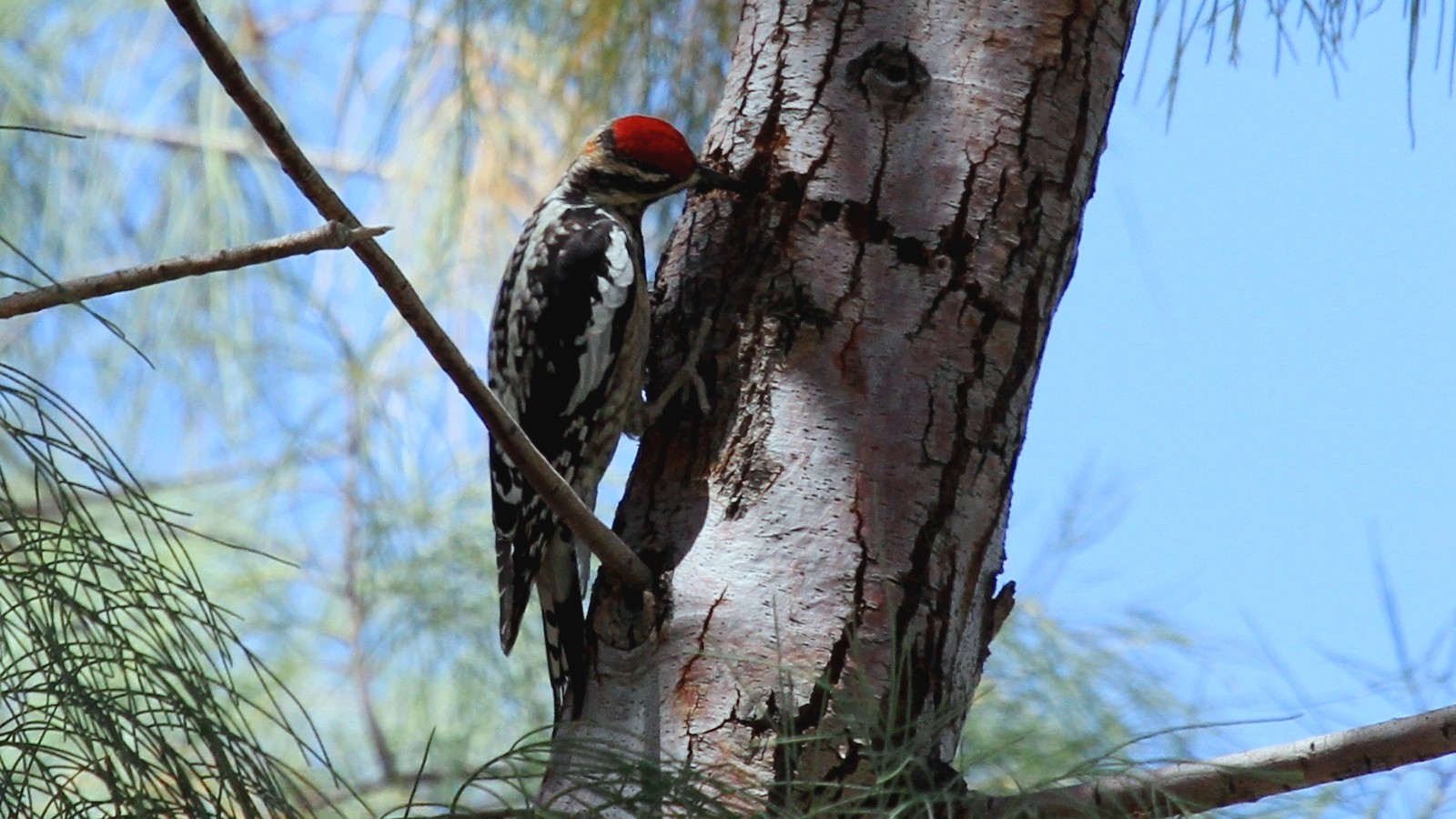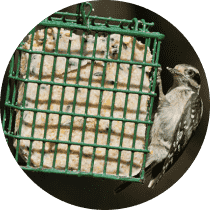Red-naped Sapsucker
A species of Sapsuckers Scientific name : Sphyrapicus nuchalis Genus : Sapsuckers
Red-naped Sapsucker, A species of Sapsuckers
Botanical name: Sphyrapicus nuchalis
Genus: Sapsuckers
Content
Description General Info
 Photo By panza-rayada , used under CC-BY-SA-3.0 /Cropped and compressed from original
Photo By panza-rayada , used under CC-BY-SA-3.0 /Cropped and compressed from original Description
The red-naped sapsucker is a medium-sized woodpecker, measuring 19–21 cm (7.5–8.3 in) long and weighing 32–66 g (1.1–2.3 oz). Adults have a black head with a red forehead, white stripes, and a red spot on the nape; they have a white lower belly and rump. They have a yellow breast and upper belly. They are black on the back and wings with white bars; they have a large white wing patch. Adult males have a red throat patch; for females, the lower part of the throat is red, the upper part white. 
Size
20-23 cm (8-9 in)
Colors
Black
Red
Gray
White
Life Expectancy
4.83 years
Nest Placement
Cavity
Clutch Size
3 - 7 eggs
Number of Broods
8 - 12 days
Nestling Period
23 - 32 days
Feeding Habits
Red-naped Sapsucker drills holes in trees like willow and birch to lap up sap with a specialized tongue and preys on insects, such as ants and beetles, either by picking them off foliage, catching in flight, or trapped in sap. They also consume fruit and seeds.
Habitat
Red-naped Sapsucker's preferred habitat encompasses the mixed woodlands of the Rocky Mountains and Great Basin in North America, notably between 1,000 and 10,000 feet elevation. These birds favor forests with willow, aspen, birch, and coniferous trees. They adapt well to both natural and human-impacted areas with adequate standing dead trees for nesting. Their migration and winter habitats include oak or pine-oak forests and riparian zones.
Nest Behavior
Red-naped Sapsucker males mainly excavate the nests, a process requiring 6 days to 4 weeks, with occasional female help. They may reuse or create new holes annually, do not line nests with materials, and exhibit no specified egg-laying pattern. Both parents partake in chick-rearing.
Nest Characteristics
Red-naped Sapsucker nests in cavities excavated within live or dead trees, often aspens or pines, at heights of 2-75 feet. Chosen trees are typically larger than 11 inches in diameter with heartwood fungus. Nest entrances are approximately 1.5 inches wide and tall, with a 4.5-inch wide interior padded with wood chips.
Dite type
Insectivorous
General Info
Feeding Habits
Bird food type
Bird Feeder Type

Suet Cage
Sounds
Call
Recording location: United States
Behavior
Red-naped Sapsucker exhibits typical woodpecker behaviors such as hitching along tree trunks and flying in an undulating pattern. Distinctively, red-naped Sapsucker drills unique sap wells to feed on tree sap, a key part of their diet, using specialized tongue hairs. Both sexes vigorously defend their feeding territories with displays of head thrusting, wing flicking, and vocal chases. During mating season, courtship involves loud calling, bill-raising, and feather displays. Pairs are monogamous for the breeding season, occasionally with the same partner over multiple seasons, possibly due to site fidelity rather than pair bonds.
Species Status
Not globally threatened.